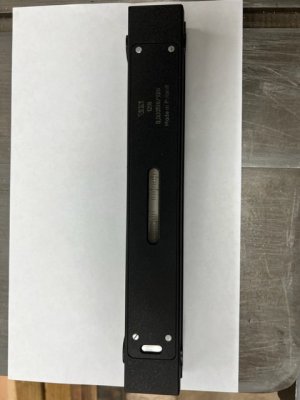Hello,
I've had 2 of these VIS levels for decades as I purchased them new to setup my 14 - 40 lathe. Now that I'm in my 4th month of retirement I have an unlimited amount of free time to spend in the shop. So I was wondering if some kind person would be able to explain to me what each graduation line represents, I'm guessing .00005 but confirmation from someone much more knowledgeable would be appreciated.
Thanks
Greg T
I've had 2 of these VIS levels for decades as I purchased them new to setup my 14 - 40 lathe. Now that I'm in my 4th month of retirement I have an unlimited amount of free time to spend in the shop. So I was wondering if some kind person would be able to explain to me what each graduation line represents, I'm guessing .00005 but confirmation from someone much more knowledgeable would be appreciated.
Thanks
Greg T


